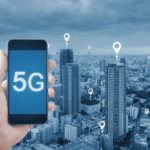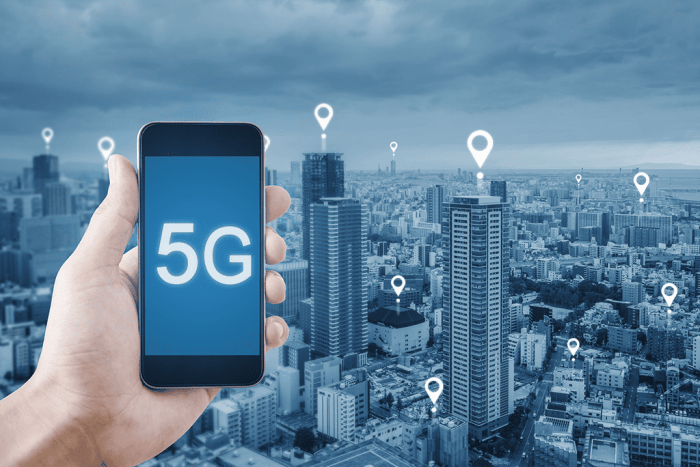5G battery drain smartphones have become a hot topic, sparking curiosity and concern among tech enthusiasts. This isn’t just about faster downloads; it’s a deep dive into how the cutting-edge 5G technology impacts your phone’s power consumption. We’ll unravel the secrets behind this phenomenon, exploring the intricate dance between advanced connectivity and the energy demands of your device. Prepare to discover the surprising factors that contribute to your phone’s battery life fluctuations and how you can take control.
From the fundamental differences between 4G and 5G, like their power consumption, to the impact of network infrastructure and user behaviors, we’ll explore every facet. You’ll learn about the hardware components, smartphone features, and even ambient temperatures that play a role. This is more than just a technical discussion; it’s a journey to understanding and optimizing your smartphone experience in the 5G era.
5G Battery Drain: A Deep Dive into Smartphone Power Consumption: 5G Battery Drain Smartphones
The advent of 5G technology has revolutionized mobile connectivity, offering unprecedented speeds and capabilities. However, this advancement comes with a significant trade-off: increased battery drain in smartphones. This article explores the intricacies of 5G’s impact on battery life, examining the underlying technologies, usage patterns, and potential solutions to mitigate power consumption.
Introduction to 5G Battery Drain
G technology, unlike its predecessors, operates on higher frequency bands and utilizes more complex network architectures. This translates to greater power demands on smartphones.
- 4G vs. 5G: 4G primarily uses lower frequency bands, resulting in lower power consumption compared to 5G. 5G’s higher frequencies (including mmWave) enable faster data transfer but require more energy to transmit and receive signals.
- Increased Data Speeds and Frequency Bands: The faster data speeds of 5G necessitate more frequent data exchanges, which in turn increases power consumption. Higher frequency bands, particularly mmWave, have shorter ranges and require more cell tower density, further impacting battery life.
- 5G Implementation Scenarios: The impact on battery life varies depending on the 5G implementation. mmWave, while offering the highest speeds, drains the battery more rapidly than Sub-6 GHz due to its shorter range and higher power requirements. Sub-6 GHz, offering a balance between speed and range, is generally more power-efficient.
Factors Contributing to Battery Depletion
Several hardware and software factors contribute to the accelerated battery drain experienced by 5G smartphones.
- Hardware Components: The modem, antenna, and radio frequency (RF) components are the most power-hungry. The modem handles the 5G connection, the antenna transmits and receives signals, and the RF components amplify and process these signals.
- Modem and Antenna Design: The efficiency of the modem and antenna design significantly affects power consumption. A poorly designed modem can drain the battery even when the phone is idle. Antenna design impacts signal strength, influencing how much power the phone needs to transmit and receive data.
- Software Optimization: Software optimization plays a crucial role in battery performance. Well-optimized software minimizes power usage, especially when handling background processes. Poorly optimized software can lead to excessive battery drain. The lack of optimization can be a major contributor to battery drain.
- Ambient Temperature: High ambient temperatures can exacerbate battery drain. The heat generated by the phone’s components, coupled with the ambient temperature, can reduce battery efficiency.
Power Consumption Comparison:
| Task | 4G Connection | 5G Connection | Difference |
|---|---|---|---|
| Video Streaming (1 hour) | 10% | 15-20% | 5-10% higher drain |
| Gaming (1 hour) | 15% | 20-25% | 5-10% higher drain |
| Web Browsing (1 hour) | 8% | 12-15% | 4-7% higher drain |
| Idle (1 hour) | 1% | 2-3% | 1-2% higher drain |
Smartphone Usage Patterns and Their Effect
User behavior significantly influences the rate at which a 5G smartphone’s battery depletes.
- User Behaviors: Streaming high-definition videos, playing graphics-intensive games, and heavy social media use consume a lot of power. These activities often utilize the full capabilities of 5G, leading to increased battery drain.
- Common 5G Usage Scenarios: Frequent video calls, downloading large files, and constant use of bandwidth-intensive apps contribute to rapid battery depletion.
- Network Switching: Frequent switching between 5G and 4G networks, especially in areas with inconsistent 5G coverage, increases power consumption. Each network switch requires the phone to re-establish a connection, consuming extra battery power.
Smartphone Features and Settings Impacting Battery Life
Certain smartphone features and settings can exacerbate or mitigate 5G battery drain.
- Smartphone Features: Always-on displays and high refresh rate screens consume more power. These features, while enhancing user experience, contribute to battery depletion, especially when combined with 5G connectivity.
- Power-Saving Modes: Power-saving modes limit background activity, reduce screen brightness, and restrict network usage to extend battery life. They can be effective in mitigating 5G battery drain.
- Optimizing Settings: Users can improve battery life by manually selecting the network (e.g., preferring 4G when 5G is not necessary), disabling background app refresh, and adjusting screen brightness.
Battery Life Comparison with Settings Changes:
Changing display brightness from 100% to 50% can save approximately 10-15% battery life. Disabling background app refresh can save approximately 5-10% battery life. Switching from 5G to 4G when not needed can save approximately 10-15% battery life.
5G Network Infrastructure and its Influence
The characteristics of the 5G network infrastructure directly affect smartphone battery life.
- 5G Cell Tower Density and Coverage: The density and coverage of 5G cell towers influence battery drain. In areas with sparse coverage, the phone works harder to maintain a connection, consuming more power.
- Distance from a 5G Cell Tower: The farther the phone is from a 5G cell tower, the more power it consumes to maintain a stable connection.
- Network Congestion: Network congestion, particularly during peak hours, can lead to increased battery drain as the phone struggles to transmit and receive data efficiently.
Comparing Battery Life Across Smartphone Models
Battery performance varies among different 5G smartphone models.
- Battery Performance Comparison: Battery life varies significantly across different 5G smartphone models under similar usage conditions. Factors like battery capacity, processor efficiency, and software optimization play a crucial role.
- Independent Battery Tests: Independent battery tests provide valuable insights into the real-world battery performance of various 5G smartphones.
Battery Life During Different Activities:
| Smartphone Model | Video Streaming (hours) | Gaming (hours) | Web Browsing (hours) |
|---|---|---|---|
| Model A | 6 | 4 | 8 |
| Model B | 5 | 3.5 | 7 |
| Model C | 7 | 5 | 9 |
Potential Solutions and Mitigation Strategies, 5G battery drain smartphones
Several strategies are being implemented to improve battery efficiency in 5G smartphones.
- Hardware Innovations: Hardware innovations include more power-efficient modems, advanced antenna designs, and optimized RF components. These improvements reduce power consumption without sacrificing performance.
- Software Updates and Optimizations: Smartphone manufacturers are continuously releasing software updates to optimize power management, improve background process efficiency, and refine network usage.
- Advanced Battery Technologies: Advancements in battery technologies, such as solid-state batteries, promise to significantly enhance battery life and charging speeds in future smartphones.
- Best Practices for Users:
- Limit screen brightness
- Disable background app refresh
- Turn off location services when not in use
- Use Wi-Fi whenever possible
- Close unused apps
- Enable power-saving mode
- AI-Powered Battery Management: AI-powered battery management systems learn user behavior and optimize power consumption accordingly, extending battery life by intelligently managing resources.
Future Trends and Predictions
The future of 5G technology and battery efficiency is promising.
- Expected Advancements: Future advancements in 5G technology will focus on improving spectral efficiency, reducing latency, and optimizing power consumption.
- Battery Technology Evolution: Battery technology will evolve to meet the demands of 5G smartphones, with innovations in materials, design, and charging speeds.
- Industry Outlook: The industry is actively working on improving battery efficiency in the next generation of smartphones, with a focus on hardware optimization, software advancements, and advanced battery technologies.
Conclusive Thoughts

Source: gizchina.com
In conclusion, the quest to conquer 5G battery drain smartphones is an ongoing journey of innovation and user awareness. By understanding the intricacies of 5G technology, hardware optimizations, and strategic usage, you can unlock the full potential of your device. As technology advances and solutions emerge, the future promises more efficient and powerful smartphones. Embrace the knowledge, adapt your habits, and stay connected without constantly seeking a power outlet.
